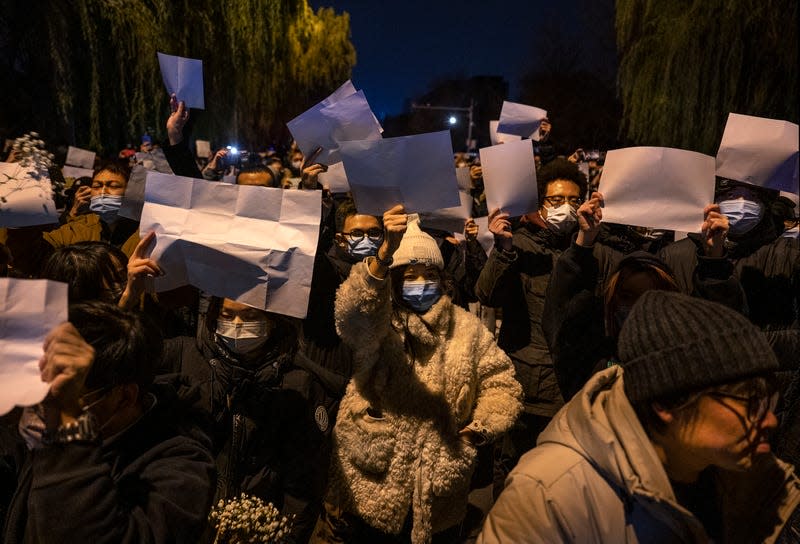How white squares became the symbol of China's protest movement

As unprecedented demonstrations against China’s covid restrictions sweep across the country, protestors from Beijing to Shanghai are holding aloft sheets of blank A4 paper, and WeChat feeds are filled with white squares.
In a nation where political speech is censored, the white square has become a symbol of what citizens have been forced to leave unsaid by their increasingly authoritarian government. The squares, in that sense, are a way to weaponize enforced silence.
Read more
The “White Paper Revolution” (白纸革命), as it has been dubbed, was sparked by an apartment fire in Urumqi, the capital of Xinjiang, which killed 10 people on Nov. 24. Protests broke out in the region, with authorities accused of leaving residents to die rather than break covid rules. In Shanghai, a vigil for victims of the fire began with candles and white sheets of paper, but later escalated into anti-lockdown protests. Images of the vigil were shared on social media, blowing the lid off a powder keg of frustration with zero-covid policies, and igniting similar protests across the country.
Since then, the white square has become ubiquitous at demonstrations as well as online, where Chinese netizens are changing their profile pictures to blank white squares and posting white-square emojis (⬜) and pictures as they seek to dodge censors and show solidarity with the protestors.
During Hong Kong’s protests in 2020, blank sheets were used after China passed its sweeping national security law that banned popular protest slogans. This year, demonstrations in Russia against the war in Ukraine have also used the white square as a sign of objection.
From big characters to blank canvases
The blankness of China’s current protest symbol stands in stark contrast to the critical role of the “big character poster” (大字报) used in Chinese political campaigns throughout the 20th century. These large banners, containing handwritten political phrases, were central to the Hundred Flowers Campaign from 1956-1957, a brief window where the Chinese Communist Party (CCP) solicited citizens to openly air their grievances about the government.
It was also critical to the “Democracy Wall” of 1978-1979, a brick wall in the Xidan district of Beijing that became a signboard for citizen discontent. The spontaneous show of civil disobedience originated with a big-character poster, and would later be covered in poems, personal accounts, and philosophical essays revealing citizens’ candid thoughts on Chinese society. In the run-up to the 1989 Tiananmen Square protests, big-character posters first appeared on university campuses, which became hubs for revolutionary sentiment and student organizing.
Even this year’s rare October protest on Sitong Bridge in Beijing, just days before the pivotal 20th Party Congress, utilized two big-character posters, slashing out dissent in bold, red brushstrokes.
Now, amid a highly censored environment both online and off, Chinese citizens have ditched words altogether. The white square has become an ironic vehicle to communicate what’s forbidden, both playing by the authorities’ rules while also reshaping them into a tool of resistance.
More from Quartz
Sign up for Quartz's Newsletter. For the latest news, Facebook, Twitter and Instagram.
